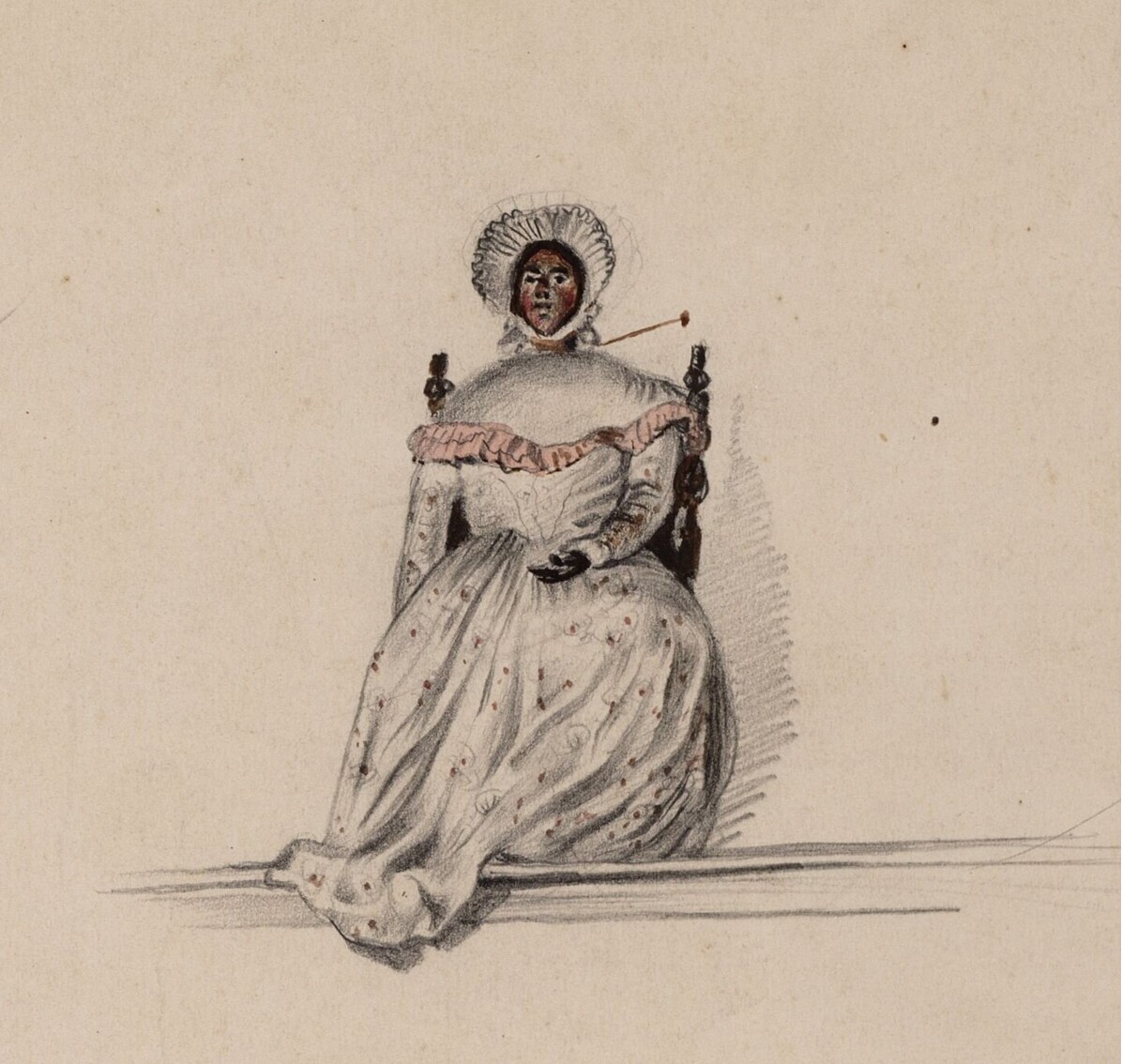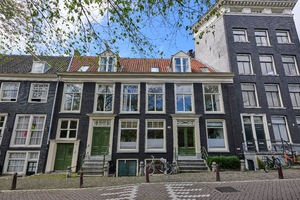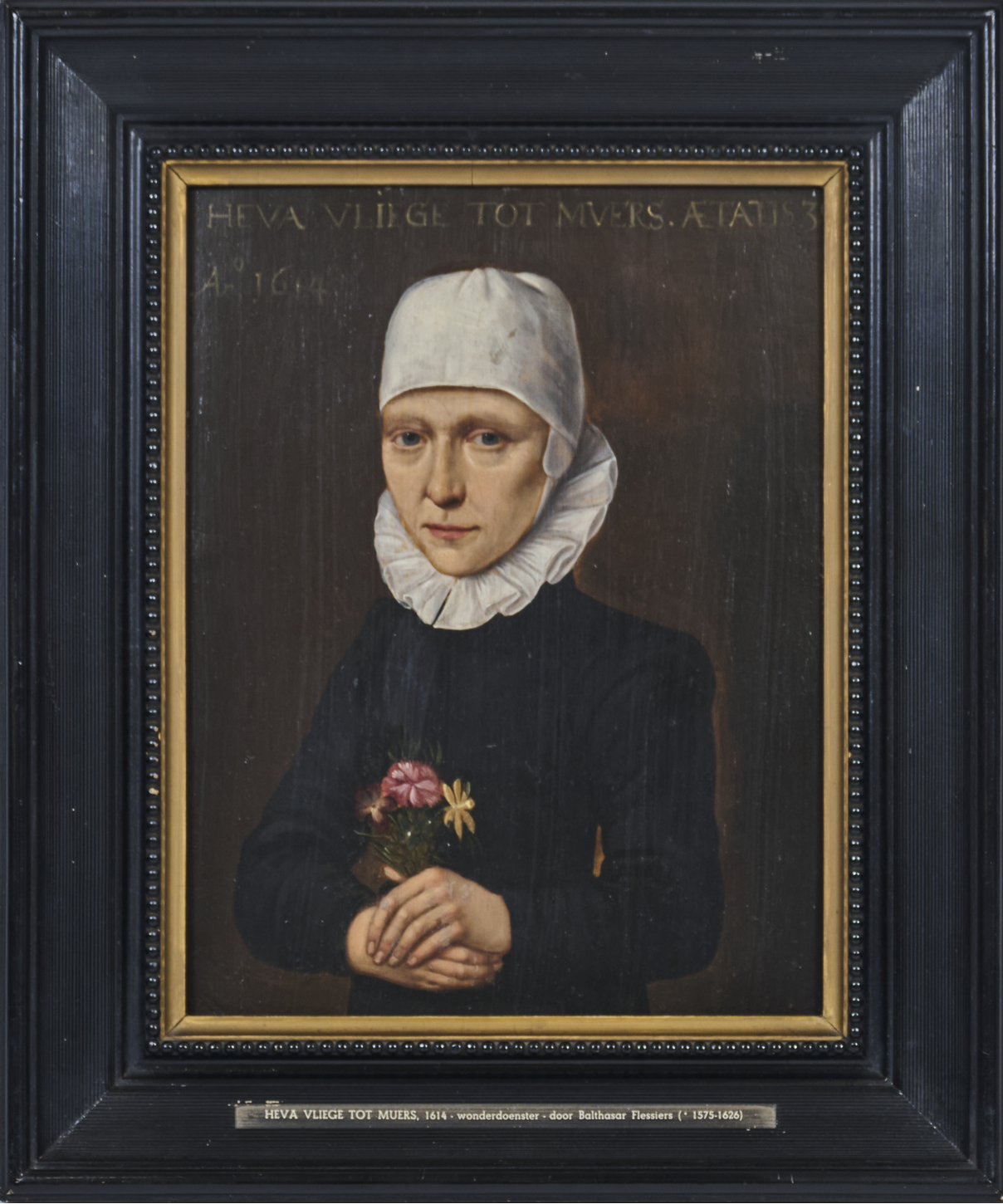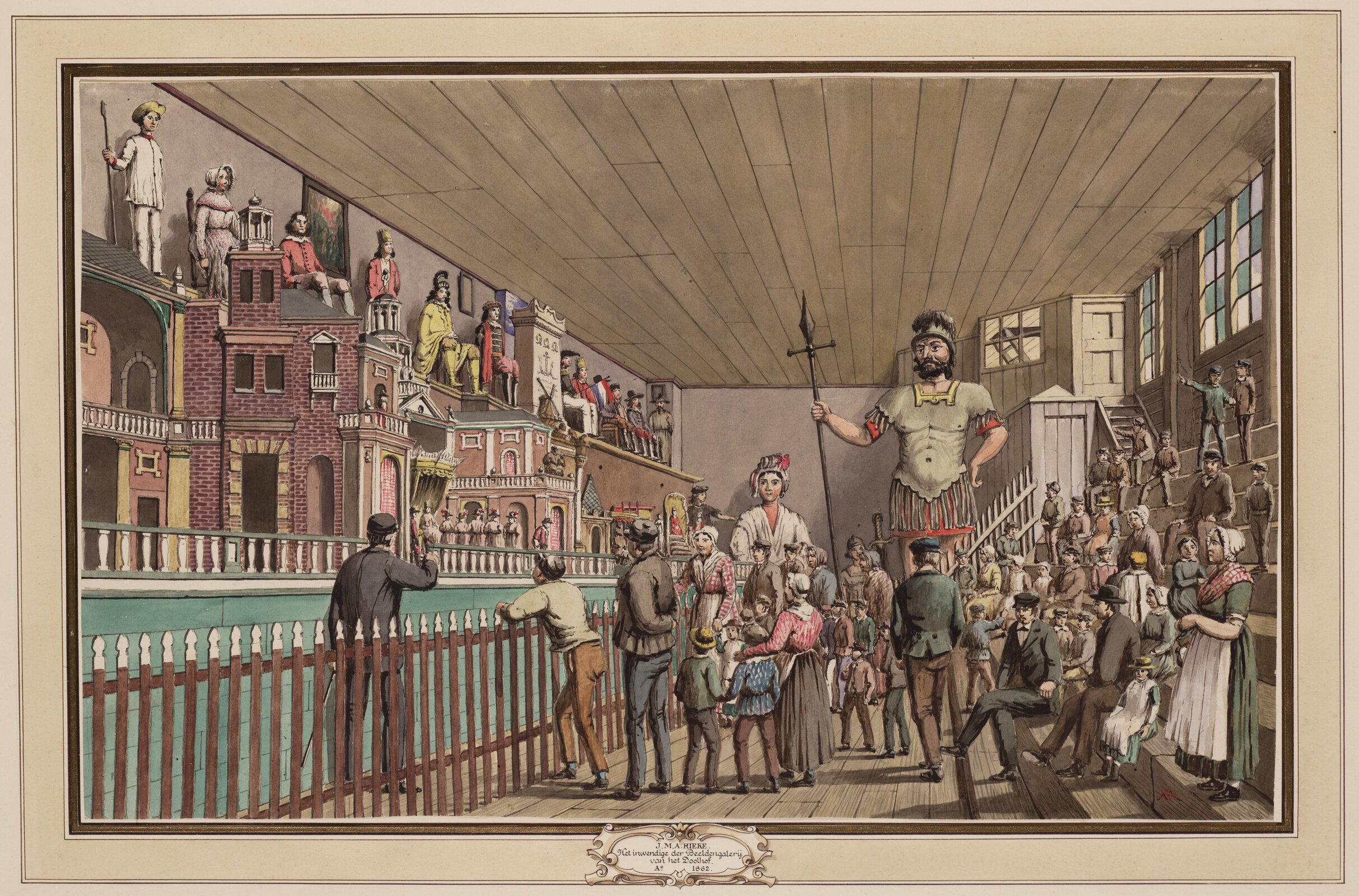Amsterdam had several labyrinths from the seventeenth to the nineteenth century. There, visitors were entertained by organs, fountains and moving statues of well-known figures such as Eva Vliegen.
Location
Old Labyrinth
Prinsengracht 338
Type
Attraction
Religious community
Christendom algemeen
Object
Drawing of the lost mechanical statue of Eva Vliegen
Maker and date
Johan George Lodewijk Rieke
1862
Visit
Viewable on request at the City Archives Amsterdam
The mechanical sculpture in this drawing represents the Protestant "miracle maiden" Eva Vliegen, nicknamed Besje van Meurs (c. 1575-1637). This woman from the German town of Meurs caused a stir in the early seventeenth century: she is said to have eaten nothing for years and to have lived only of the smell of flowers. She also claimed to see angels regularly and made predictions. These stories and her portrait were spread far and wide in pamphlets. Many came to Meurs to see the miracle with their own eyes. When, in 1628, it was finally discovered that she did in fact secretly eat food, it was widely reported in newspapers and sneering texts. She was also mocked in other ways.
Until 1862, a life-sized wax statue of Eva Vliegen stood in the Oude Doolhof (lit. Old Labyrinth) in Amsterdam. It mocked the false fasting miracle by way of a mechanical arm with which it wiped bread crumbs from its mouth. An accompanying text further made fun of her:
"That's Bessie van Meurs, that lying woman,
Ah see, she shakes her head, and swears as stiffly as ever,
She hasn't eaten bread in 32 years,
Well the deceiving woman, lies through her teeth."
Today Eva Vliegen might have been diagnosed with an eating disorder, but in the seventeenth century such behavior was understood from a religious perspective. Many people fasted regularly as a means of self-sanctification. Therefore, the outrage by her deception was all the greater, as was the hilarity and schadenfreude. The lifelike wax statue, which could move, was intended both as a kind of "pillory by proxy" and as a moralistic warning.
In 1862, the Oude Doolhof, where generations of Amsterdam residents had come to know the statue and story of Besje van Meurs, was dismantled. After this, it was shown one more time at the 1895 World's Fair on Museumplein. Since then, the statue has disappeared.
Fasting
A practice within various religious traditions in which one abstains from eating and drinking for a certain time.
Eelco Nagelsmit
Art history lecturer Vrije Universiteit Amsterdam
Last edited
October 22, 2024
The Mechanical Wax Statue of Eva Vliegen in the Statue Gallery of the Oude Doolhof, Prinsengracht 338, J.G.L. Rieke, ca. 1862, drawing. Collection City Archives Amsterdam.
Exterior: photography Robert Westera.
Heva Vliege tot Muers, Balthasar Flessiers, 1614, oil on canvas. Collection Our Lord in the Attic Museum.
De beeldengalerij in het Oude Doolhof, Prinsengracht 338, J.G.L. Rieke, ca. 1862, drawing. Collection City Archives Amsterdam.
Vanhaelen, A., The Moving Statues of Seventeenth-Century Amsterdam: Automata, Waxworks, Fountains, Labyrinths (University Park PA 2022) 140-142.
Deth, R. van, en W. Vandereycken, Van vastenwonder tot magerzucht. Anorexia nervosa in historisch perspectief, deel 1 (Meppel 1988) 78-81.
Anoniem, Een warachtige beschrijvinge van het groot mirakel en teecken des Heeren het welcke gheschiedt is binnen de stadt van Meurs, al waer God sijnen enghel ghesonden heeft aen [...] Iefken Vlieghen […] (Amsterdam 1614).
Online sources
Beeldbank van het Stadsarchief Amsterdam
Last visited 08-08-2024








